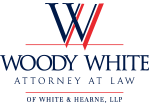Backing out of a parking spot or a driveway can be a tedious task for many when blind spots develop. While some vehicles have significant glass in the model design allowing for elimination of blind spots when backing up, some vehicles such as commercial and cargo vans do not. Additionally, “back up” accidents in North Carolina often do not occur because of blind spots for the backing driver, but because of the inability for oncoming drivers to see the backing vehicle. So, who is at fault?
The law of vehicular control
Motor vehicle accidents in North Carolina are governed by the law of vehicular control. The law states that drivers are responsible for control of their own vehicle at all times, including when they are backing up in any given driving scenario. However, when being struck from the rear end by an approaching vehicle, the law also applies to those moving forward as well. Typically, as long as there are no restrictions for backing into an open lane, the vehicle striking from the rear is most at fault. When drivers back into a stationary vehicle, the backing driver is usually held liable.
The law of contributory negligence
Even when there is a collision involving a vehicle approaching from the rear, the backing driver could also be liable when not signaling or moving into a restricted zone. This could result in a situation of shared fault, which motor vehicle accidents attorneys stress can be bad for plaintiffs.
North Carolina still uses the ancient contributory negligence standard when motor vehicle accidents are assessed, which is the legal concept that anyone who contributes in any way to an accident is barred from obtaining financial compensation. For this particular reason, safety is essential when backing up a vehicle within the state.


